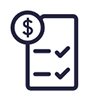Your credit card balance is a figure worth understanding. Put plainly, your credit card balance is the amount you owe your credit card issuer at the time you check it.

What is a Credit Card Balance?
6 min read
Last Updated: February 5, 2025
Next steps

See if you're pre-approved

View all Discover credit cards
See rates, rewards and other info
You may also be interested in
Was this article helpful?
Was this article helpful?


